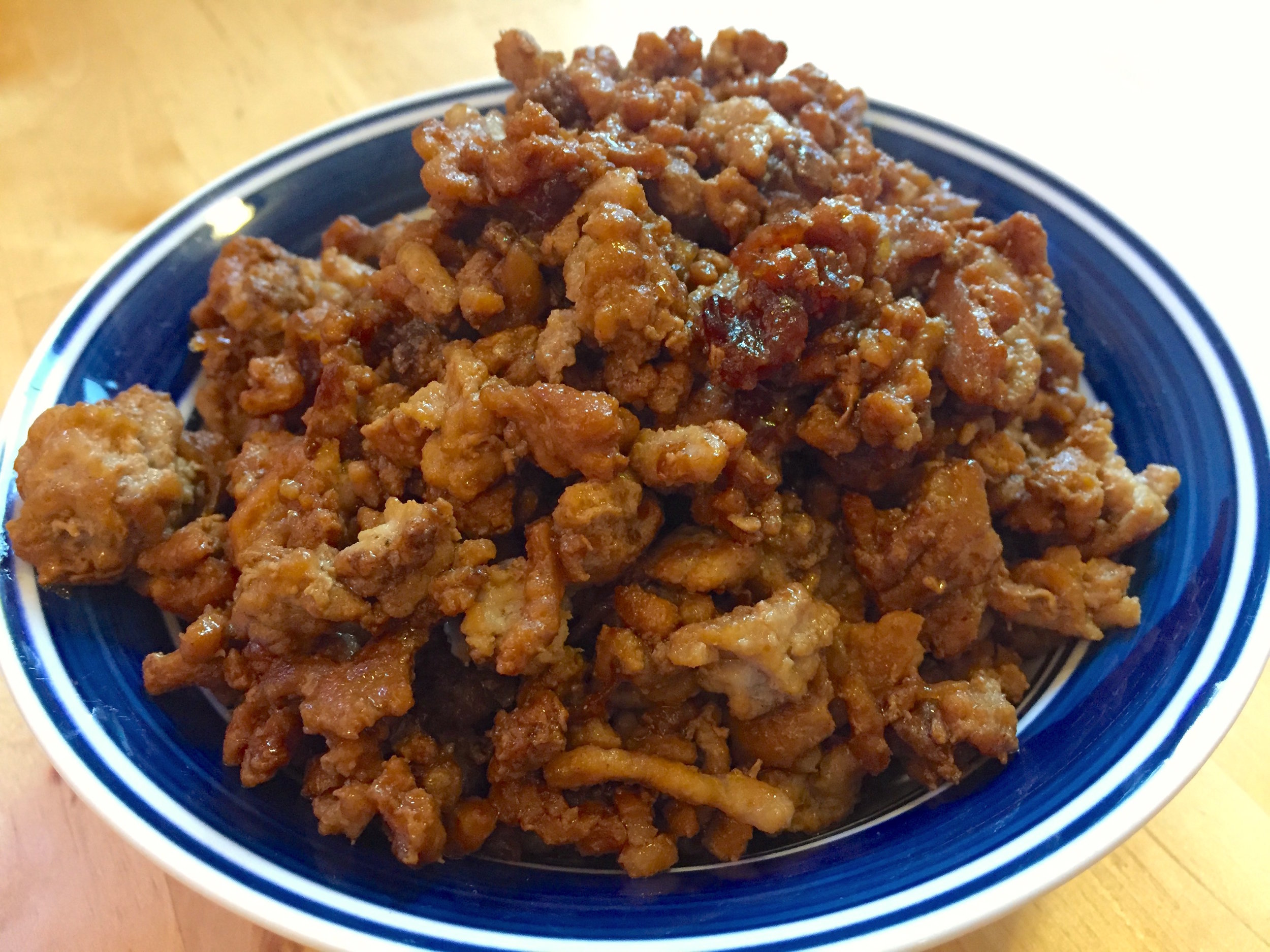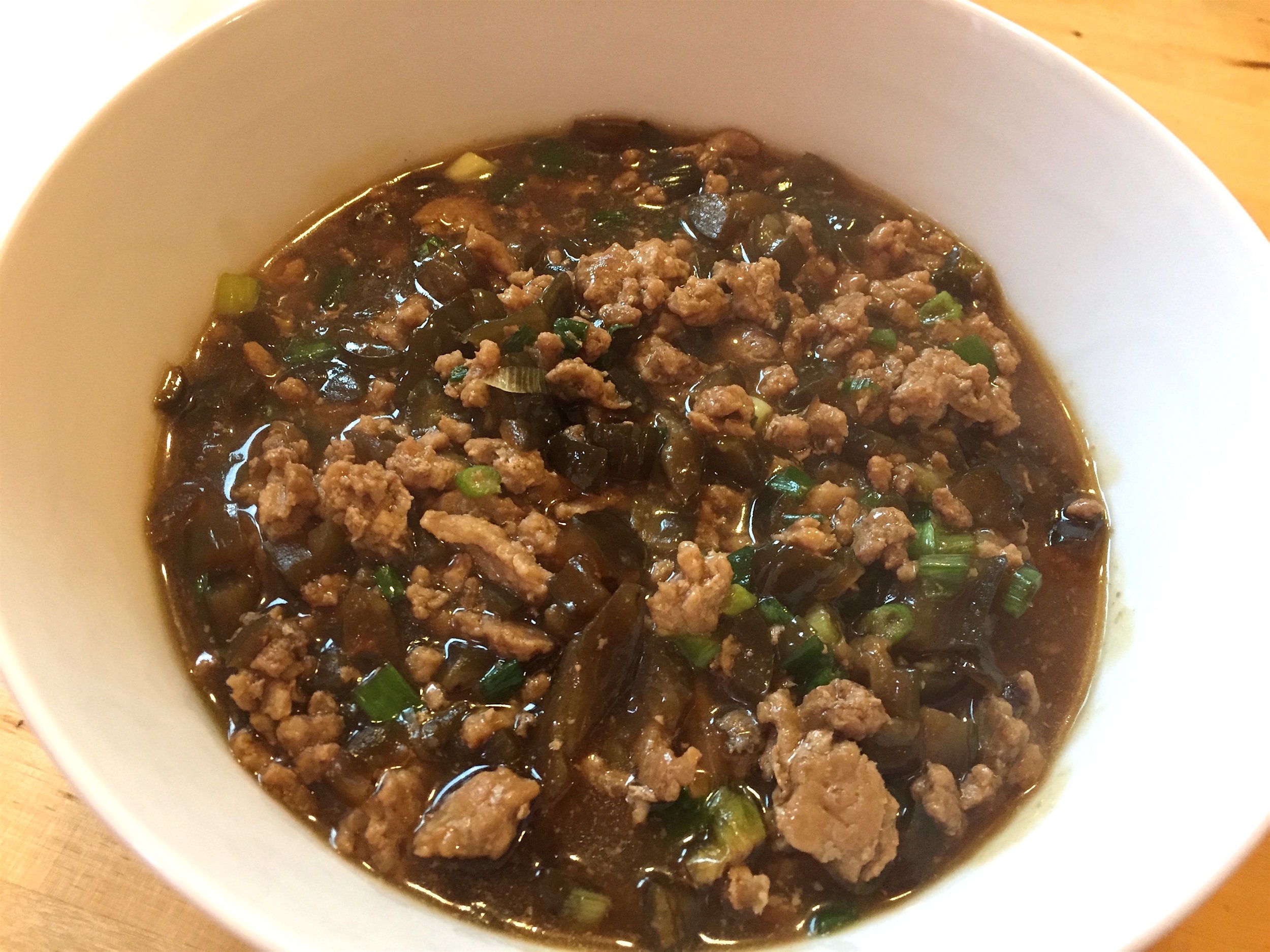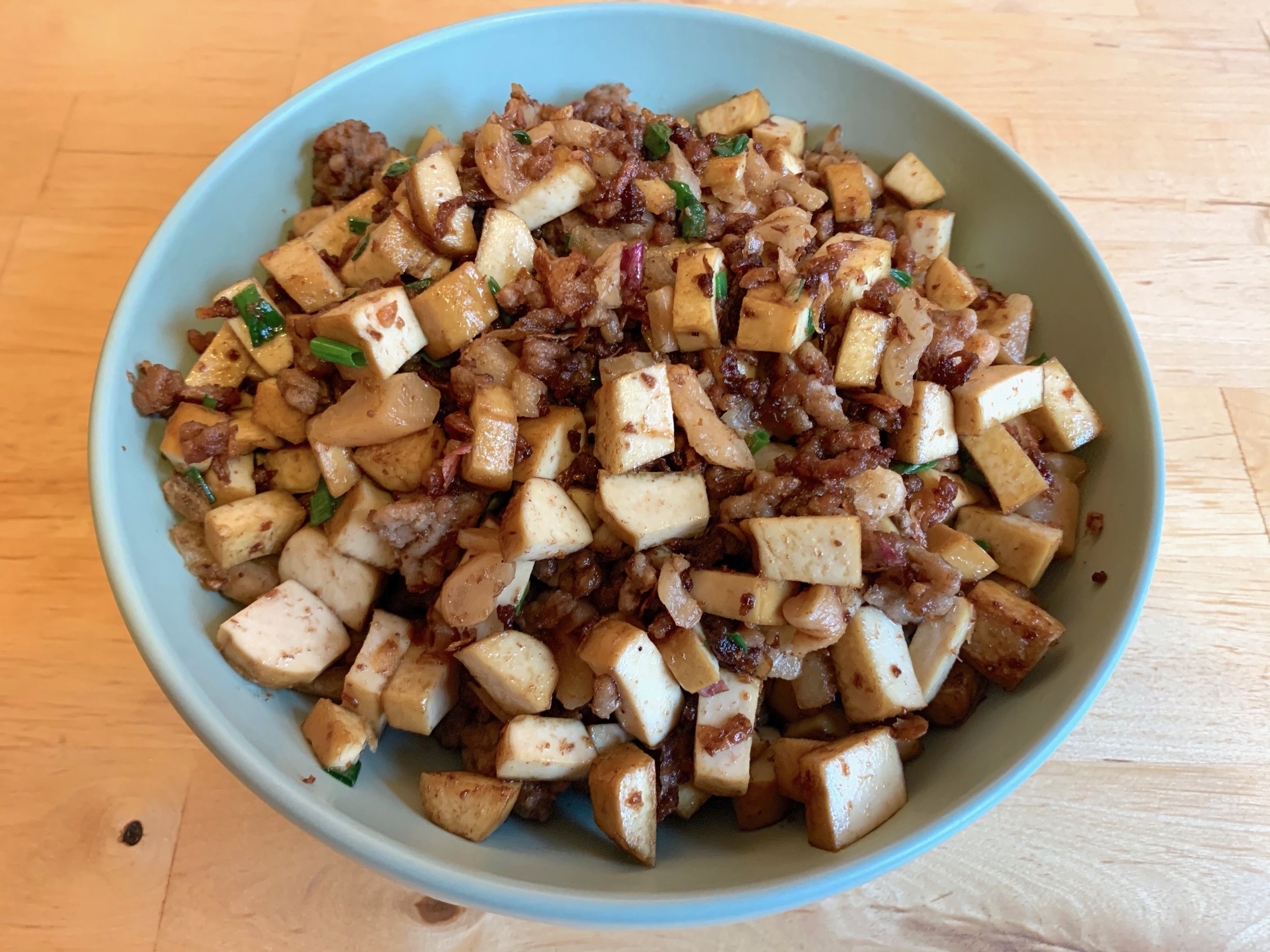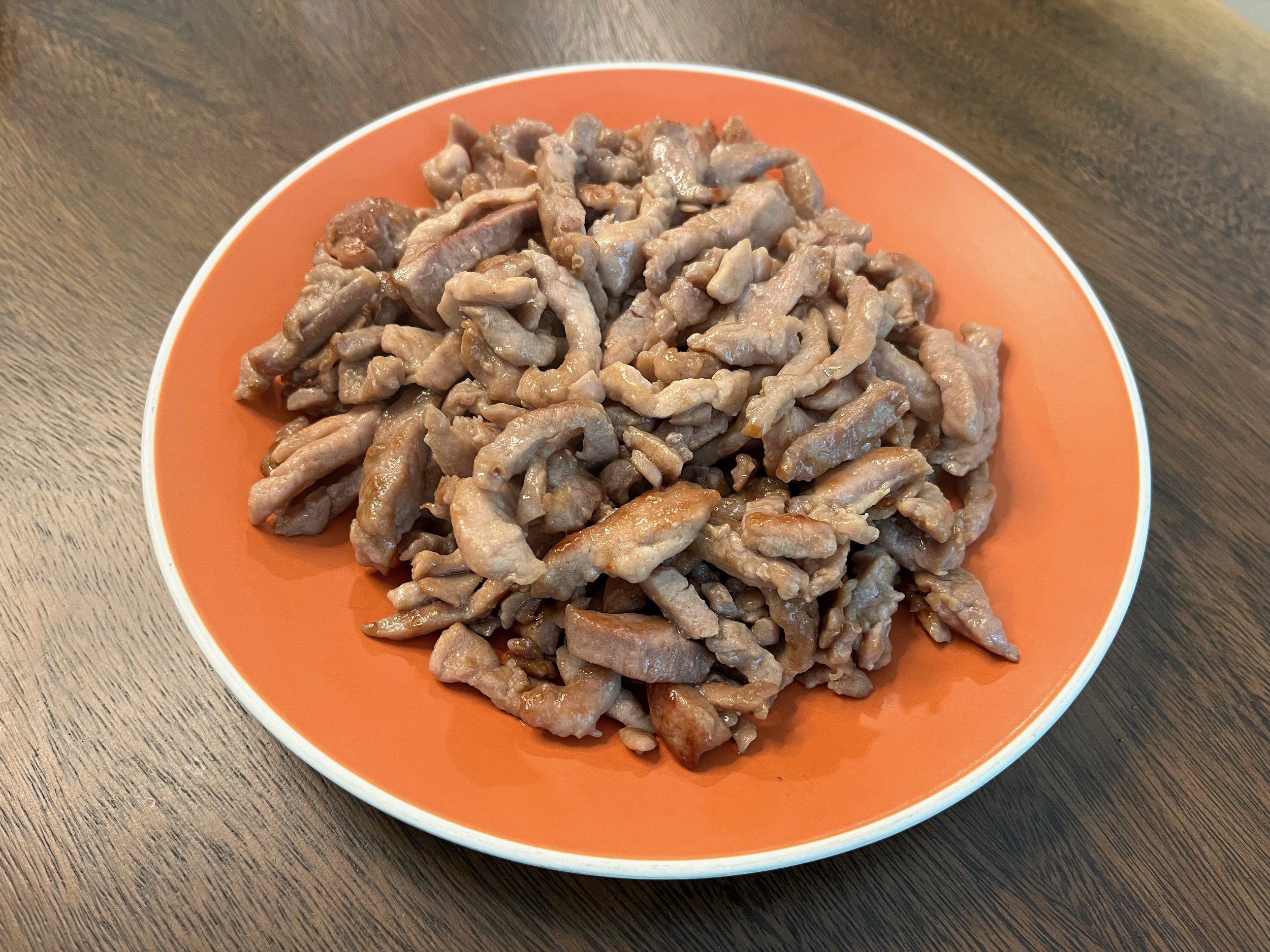Taiwanese Minced Pork

肉燥 (Rou Zao)
Braised minced pork over rice is a staple of Chinese cooking, with the references to early forms of this recipe dating back to the Zhou Dynasty. [1] There are many regional variations of this dish, but all involve cooking minced pork with soy sauce and aromatic spices. The Taiwanese version of this dish shares a similar flavor profile to the more famous Taiwanese lu rou (braised pork belly).[2] The working collar cousin of lu rou, what this minced pork preparation lacks in richness it makes up for with its versatility and speed of preparation. This dish can stand on its own, traditionally served over rice or noodles accompanied by pickles and a braised egg. This recipe can also be used as a time-saving starter for other dishes, such as mapo tofu, minced pork with pickles, and stir fried green beans. Additionally, cooked minced pork freezes well, and can be a convenient addition to many quick meals, such as congee, soups, spring rolls, fried rice or noodles, or instant ramen. I tend to make this recipe in large batches and freeze it for later use.
Ingredients
1 pound ground pork
½ cup low sodium soy sauce
¼ cup crispy fried shallots
½ tbsp brown sugar
1 tsp white pepper
1 tsp five spice powder
1 tbsp dark soy sauce (optional)
1 tbsp Shaoxing rice wine (optional)
Ground pork usually contains more than enough fat to cook the meat, but this fat must first be rendered. Place one pound of ground pork in a cold skillet and heat it on low. We want to render enough fat to coat the skillet. While the skillet comes to temperature, break up the ground pork to form a relatively even layer, and sprinkle over white pepper and five spice powder. Avoid overmixing the ground pork, which can result in compacted, dense meat.
Once we start to see oil on the surface of the skillet under the meat, we can start the browning process. If you are using a particularly lean grind, supplement the natural fat with vegetable oil when browning the meat. Turn the heat up to high and brown the pork.
Let the meat cook undisturbed for two to three of minutes, building up a thin crust on the meat and some fond on the pan. Then, break up the pork with a spatula into small pieces (no larger than an inch). Add the fried shallots and stir the pork, continuing to brown the meat for two more minutes.
Once most of the surfaces of the pieces of pork are browned, turn the heat down to medium and add half a cup of soy sauce. The soy sauce is acting as our deglazing liquid, so be sure to scrape the bottom of the pan to loosen any fond that may have formed during the browning process. Add the brown sugar and stir to dissolve. When cooking to impress, you may choose to add at this stage a tablespoon or two of dark soy sauce and Shaoxing rice wine, for color and fragrance, respectively.
Simmer on medium heat, partially covered and stirring occasionally, for about 15 minutes, until the pork is fully cooked through and tender, and most of the liquid has been absorbed.
If you ground your own meat, or had a butcher grind it for you, you might be done here. However, here in America, most pre-ground pork is a sausage grind, with either an 80%/20% or 70%/30% lean/fat ratio. The resulting oil is an excellent cooking liquid, but not that great to eat. I prefer to drain most of this fat before serving or storing, using either a heat-safe colander or a slotted spoon.
Substitutions
This recipe is a drier preparation of this dish than strictly traditional (my personal preference). For a richer, more traditional sauce, instead of draining the fat, add a cup of either water or chicken stock and let the liquid come to a boil. Meanwhile, prepare a cornstarch slurry (mix one tablespoon of cornstarch with two tablespoons cold water). Pour the slurry into the boiling pan and stir vigorously. When the sauce thickens, remove from heat.
When it comes to seasoning this dish, the salt comes from the soy sauce used to braise the meat. If you find that the final product is not salty enough for your liking, you may substitute standard soy sauce for low-sodium soy, or add salt to taste after draining the fat. If you prefer less salt, cut the volume of soy sauce, instead adding water such that you introduce a total of half a cup of braising liquid.
Ground pork may be substituted for other ground meats, though I do not recommend using beef in this recipe, as its strong flavor radically alters the dish’s profile. Substituting poultry such as ground turkey or chicken for the pork works well. Due to the low fat content of poultry, we skip the rendering step and instead cook the meat in a neutral vegetable oil. When adding the soy sauce, also add a cup of water or chicken stock to help the meat stay moist. As always when working with ground poultry, be vigilant when it comes to overcooking, and expect a shorter cook time.
Crispy fried shallots can be found in most East Asian supermarkets, but you can also substitute either fresh shallot or onion. Finely dice your allium of choice, then brown them in the pan with a small amount of vegetable oil prior to adding the pork.
[1] 1046-256 BCE
[2] In some regions, the terms rou zao and lu rou are used interchangeably.
Recipe
Prep Time: 2 min Cook Time: 20 min Total Time: 22 min
Difficulty: 1/5
Heat Sources: 1 burner
Equipment: pan, slotted spoon (optional)
Servings: 6
Ingredients
1 pound ground pork
½ cup low sodium soy sauce
¼ cup crispy fried shallots
½ tbsp brown sugar
1 tsp white pepper
1 tsp five spice powder
1 tbsp dark soy sauce (optional)
1 tbsp Shaoxing rice wine (optional)
Instructions
1. Place ground pork in a cold skillet and heat the skillet on low heat until fat starts to render. During this phase, introduce the white pepper and five spice powder, and break up the ground pork.
2. Once enough fat has rendered to coat the bottom of the pan, turn the burner up to high heat, add the shallots, and brown the pork, stirring occasionally.
3. When the pork is sufficiently browned, turn the heat down to medium and add the soy sauce, brown sugar, dark soy, and rice wine.
4. Let simmer for partially covered, stirring occasionally, for approximately 15 minutes, or until pork is fully cooked and tender and most of the braising liquid is absorbed.
5. Remove from heat, drain the excess fat, and serve.











